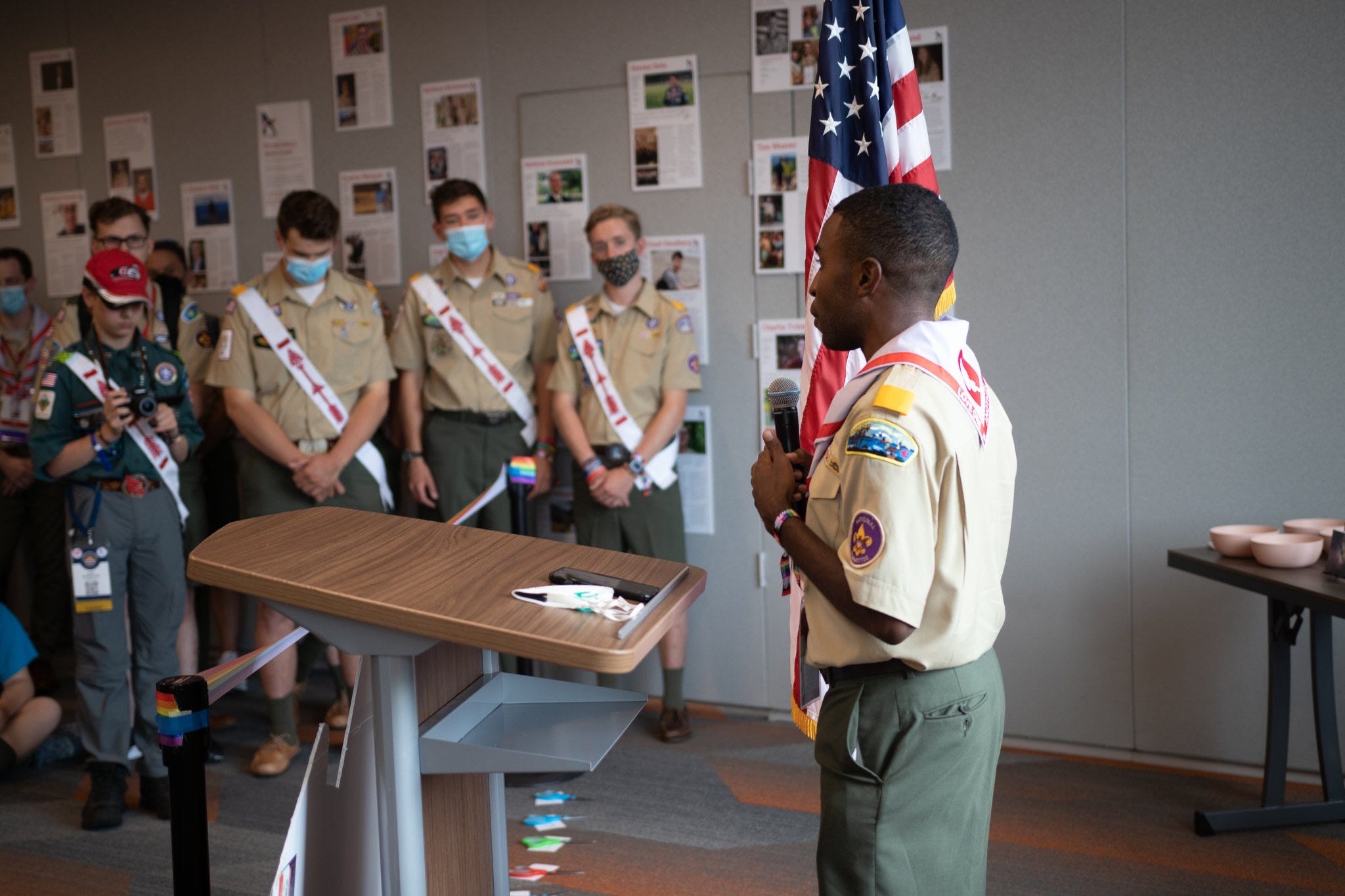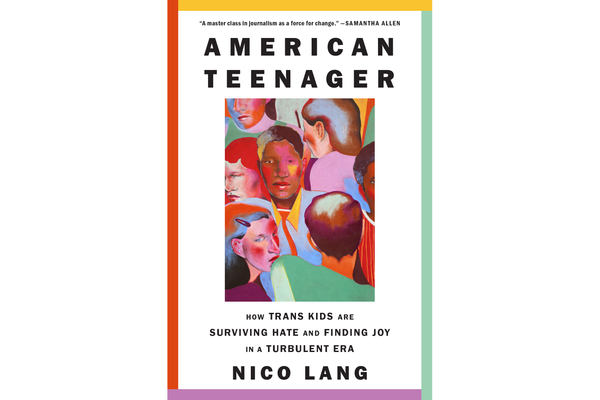Inside the DEI plans for this summer's National Jamboree
Dwayne Fontenette, Jr. gives me a preview of the community spaces on deck for the BSA's premiere national event.

Dwayne Fontenette, Jr. has not been to a National Jamboree since 2010, when he went as a contingent member with his home council.
He never could have imagined, back then, that we would be returning 13 years later to staff the event. And not just as any staff member, but as the diversity, equity and inclusion lead at the Jamboree.
“I have never been part of a team has been more supportive of DEI than I am right now,” Fontenette told me, referring to the Jamboree executive committee. “If there's anyone out there who is doubting or wondering whether or not the Boy Scouts has made meaningful progress … the DEI community spaces are evidence that we have.”
I caught up with Fontenette (who, it must be said, is a close friend of mine) to learn more about what his team is planning for the National Jamboree this summer.
Our conversation is below, edited and condensed for clarity.

Mike De Socio: You’re the diversity, equity and inclusion lead at the Jamboree. What does that role entail?
Dwayne Fontenette, Jr.: The diversity, equity and inclusion team is responsible for national scholarships, as well as the DEI programming at the National Jamboree. And so over the past year, we managed a national scholarship process. And we awarded over $400,000, nationally, to over 800 youth in partnership with the Jamboree's administration team. And my team has been planning for the DEI programming that we will offer at this summer's National Jamboree.
De Socio: I'm glad you mentioned the scholarships, because I didn't know about that part. I actually don't think I even knew there were scholarships for Jamboree. Can you tell me more about that?
Fontenette: Yes. Tico Perez, the National Jamboree chairman, is committed—and the Boy Scouts of America more broadly is committed—to ensuring that every youth who is interested in attending the Jamboree is able to attend. And so last year, the BSA prioritized raising funds to meet scouts' financial need.
De Socio: So is this the first time there are scholarships for Jamboree?
Fontenette: It's not the first time there's scholarships for Jamboree. I think we are giving out more ... as a proportion of the Jamboree population, because the Jamboree is smaller than previous Jamborees. And this time, we had a more rigorous selection process that more heavily weighted ... financial need as the basis by which decisions were made.
De Socio: Gotcha. Let's jump into the DEI programming. I’m pretty familiar with the affinity spaces from the National Order of the Arrow Conference last year, but I realize Jamboree might be different. So what will the DEI programming look like at Jamboree?
Fontenette: The core of the DEI program this summer will be the community spaces. And so at this summer's National Jamboree—for the first time ever at a National Jamboree—the Boy Scouts of America will feature three community spaces for scouts of color, women in scouting and LGBTQ+ and allied scouts. And, not simply for scouts who share those identities, but other scouts who are interested in learning and growing in their leadership as well. And so these community spaces will serve as a meeting space, a hub, for scouts to come together to learn, to be inspired and to have fun.
De Socio: I noticed scouts with disabilities wasn't on that list. Is that because there's overlap with existing Jamboree programming?
Fontenette: You got it. So since 1997, I believe, the national special needs and disabilities committee of the Boy Scouts of America has sponsored programming related to that community. So we didn't want to duplicate efforts.
De Socio: That makes sense. Can you tell me more about what the physical community spaces will be like?
Fontenette: The community spaces will be housed in a large tent, a large white tent that is subdivided into three spaces. … Each space will be decked out with a color pattern and decorations that make them distinct, and that will also reflect each community. Each space will also include profiles of members of those communities who have made a difference in Scouting and in society, so that every scout who enters the space has the opportunity to learn more and to see themselves as a critical part of Scouting's history as well as the history of our nation.
De Socio: Where exactly will these spaces be located? Is this something scouts are going to have to go seek out, or is it easy to kind of just pass by?
Fontenette: These programs will be centrally located in the Summit Center as part of the “celebrating humanities” program.
De Socio: You were also deeply involved in crafting the affinity spaces at NOAC last year. What lessons did you learn from that, that you're bringing forward to the spaces at Jamboree?
Fontenette: One of the lessons learned from last year's conference ... was that there was high demand for the DEI programming. At NOAC, the programs are only offered in the afternoon. And I'm excited that for Jamboree, there are longer program days. And so scouts will be able to engage with the DEI programming throughout the day during program hours, which I believe are 8 a.m. to 5 p.m. Another lesson from NOAC is that scouters ... arrived in our affinity spaces hungry to learn about best practices for maintaining inclusive environments in the local area. And so at this summer's Jamboree, we'll be prepared to share additional resources that leaders can take home, so that they can improve the culture within their local programs. … Another lesson was that scouts and scouters desired more swag, giveaways than were prepared to offer. And so we are gearing up to make available additional memorabilia for scouts to take home.
De Socio: What kind of active programming is on the agenda for these community spaces?
Fontenette: The programs that we plan to offer include panel discussions, which are opportunities for scouts to learn best practices for maintaining inclusive environments; and community discussions, opportunities for scouts to engage in conversations with others of shared identities. We'll have historical displays, so as I mentioned, those are opportunities for scouts to learn more about how members of their community have contributed to bettering Scouting and society. We'll have games and activities, so opportunities for scouts to build connections and friendships with others. And we anticipate that that will include board games, tie-dyeing, trivia, talent shows, potentially button making.
Scouts will have an opportunity to contribute to the design and the feel of the space through affirmation and comment walls, so those are opportunities for scouts to leave encouraging messages for other scouts and to share their dreams and hopes for an inclusive future. We will have, like NOAC, photo stations and community maps, opportunities for scouts to take photos and indicate where they're from on maps to demonstrate the diversity and breadth of each community. And then, importantly, we'll have those take-home items that I referenced, including patches, bracelets, stickers, etc.
De Socio: What's been one of the most challenging things about creating these spaces and making them a reality?
Fontenette: Our biggest need between now and the Jamboree is to raise funds that we need in order to bring these spaces to life. And so this week, we've launched a GoFundMe campaign. We're inviting supporters of diversity, equity and inclusion work in Scouting to pitch in, to help ensure that the National Jamboree is a place where every scout experiences belonging.
De Socio: What else do you hope people walk away with when they experience your programming this year?
Fontenette: What I want to be true is that every scout who enters our community spaces feels affirmed and celebrated for who they are, and will leave with an understanding that Scouting values them and that they are part of a much larger community than they knew when they arrived at the Jamboree. I want scouts who enter our space to leave it with new friendships that they will maintain for a lifetime. And I want the scouts who enter our space to leave inspired to remain in Scouting and compelled to invite others to join the Scouting program.
De Socio: Is there anything else you want to mention?
Fontenette: I'm pretty certain that this is the first National Jamboree that the BSA has hosted since young women were admitted to all Scouting programs. … And so that is part of what excited me about this opportunity, and the opportunities that our programs will provide, is that I think it's critically important that at this particular moment, the BSA demonstrates, or does all that it can to maintain a welcoming environment for all youth at the Jamboree, and the BSA is fully committed to doing so.



